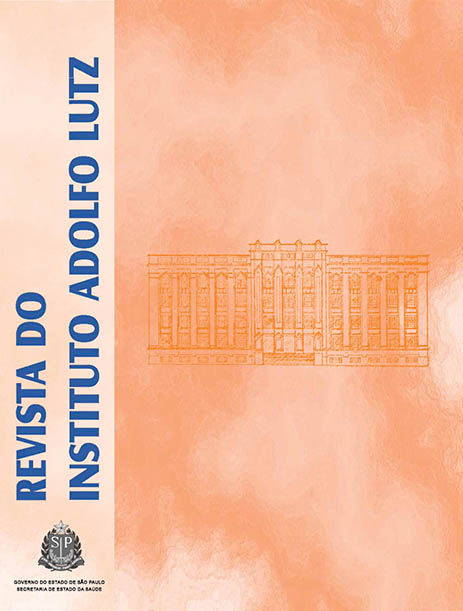Abstract
This study evaluated the effect of Geotrichum candidum addition as an adjunct culture on the acceptance and composition of Camembert-type cheese. The milk used for cheese manufacturing was pasteurized and supplemented with Lactococcus lactis subsp. Lactis and Lactococcus lactis subsp. cremoris. Four treatments were performed: control (T1) – without adding Geotrichum candidum; T2-T3-T4: containing microorganisms at concentrations of 0.5 U, 1 U and 1.5 U, respectively. After 1, 9, 17, 25, 33 and 41 days of manufacture, the cheese samples were analyzed on the following parameters: acidity, pH, protein, soluble nitrogen at pH 4.6, TCA 12 % soluble nitrogen, and moisture, and fat and salt contents in cheese after 1-day production. Sensory analysis was performed after 30 days of maturing. No significant difference was found in the physical-chemical analysis in cheeses produced with and without adding Geotrichum candidum (P > 0.05). However, significant differences (P < 0.05) were detected in all of the analyses throughout the maturing period. The acceptance of cheese by tasters increased with the rise of Geotrichum candidum concentration added into the cheese. The use of Geotrichum candidum is a valuable alternative for industries seeking for a product with favorable acceptability and with characteristics similar to the traditional Camembert-type cheese.References
1. Furtado MM. Queijos finos maturados por fungos. São Paulo (SP): Milk Bizz; 2003. p. 80-115.
2. Aziza M, Amrane A. Diauxic growth of Geotrichum candidum and Penicillium camembertii on amino acids and glucose. Braz J Chem Eng. 2012;29(2):203-10.
3. Drake MA, Boylston TD, Spence KD, Swanson, BG. Chemical and sensory effects of a Lactobacillus adjunct in cheddar cheese. Food Res Int. 1996;29(3-4):381-7.
4. Walstra P, Wouters JTM, Geurts TJ. Dairy Science and Technology. 2. ed. Boca Raton (FL): CRC Press; 2006.
5. Molimard P, Lesschaeve I, Issanchou S, Brousse M, Spinnler HE. Effect of the association of surface flora on the sensory properties of mould-ripened cheese. Le Lait. 1997;77:181-7.
6. Welthagen JJ, Viljoen BC. The isolation and identification of yeasts obtained during the manufacture and ripening of cheddar cheese. Int J Food Microbiol. 1999;16:63-73.
7. Mourgues R, Bergere JL, Vassal L. Possibility of improving organoleptic quality of Camembert cheese using Geotrichum candidum. La Techn Lait.1983;978:11-5.
8. Boutrou R, Guéguen M. Interest in Geotrichum candidum for cheese technology. Int J Food Microbiol. 2005;102:1-20.
9. Brasil. Ministério da Agricultura, Pecuária e Abastecimento. Secretaria de Defesa Agropecuária. Instrução Normativa nº 68, de 12 de dezembro de 2006. Oficializa os Métodos Analíticos Oficiais Físico-Químicos, para Controle de Leite e Produtos Lácteos, em conformidade com o anexo desta Instrução Normativa, determinando que sejam utilizados nos Laboratórios Nacionais Agropecuários. Diário Oficial [da] República Federativa do Brasil. Brasília, DF, 14 dez. 2006.
10. International Dairy Federation Standard. Cheese and cheese Processed Cheese. Determination of the total solids content, 4A: Bruxelas, 1982.
11. Wolfshoon-Pombo AF. Índice de proteólise em alguns queijos brasileiros. Bol Leite. 1983;51(661):1-8.
12. SAS/STAT. 9.2 User’s Guide, 2 ed. Cary (NC): SAS Institute; 2009.
13. Minim VPR. Análise sensorial: Estudo com consumidores. Viçosa (MG): Universidade Federal de Viçosa; 2006.
14. Brasil. Ministério da Agricultura, Pecuária e Abastecimento. Secretaria de Defesa Agropecuária. Instrução Normativa nº 62, de 29 de dezembro de 2011. Aprova o Regulamento Técnico de Produção, Identidade e Qualidade do Leite tipo A, o Regulamento Técnico de Identidade e Qualidade de Leite Cru Refrigerado, o Regulamento Técnico de Identidade e Qualidade de Leite Pasteurizado e o Regulamento Técnico da Coleta de Leite Cru Refrigerado e seu Transporte a Granel, em conformidade com os Anexos desta Instrução Normativa. Diário Oficial [da] República Federativa do Brasil. Brasília, DF, 30 dez. 2011. Seção 1.
15. Voigt DD, Patterson MF, Linton M, Kelly AL. Effect of high-pressure treatment of milk prior to manufacture on ripening of Camembert cheese. Innov Food Sci Emerg Technol. 2011;12:1-5.
16. Eck A. O queijo, vol. 1. Coleção Euroagro. Lisboa: Europa-América; 1987.
17. Gripon JC. Mould-ripened cheeses. In: Fox PF. Cheese: Chemistry, Physics and Microbiology, vol. 2. 3. ed. Londres: Elsevier; 2004.
18. Fox PF. (ed.). Cheese: chemistry, physics and microbiology: major cheese groups, vol 2. 3. ed. Londres: Elsevier; 2004.
19. Farkye NY, Fox PF. Objective indices of cheese ripening. Trends Food Sci Tecnol. 1990;11:37-40.
20. Pomar E, Prieto B, Franco I, Tornadijo ME, Fresno JM, Gonzalez J. Caracterización química y físico-quimica del queso Zomarano com denominacion de origen. Anais do Congresso, Porto, Portugal, maio de 2001.
21. Furtado MM. A arte e a ciência do queijo. São Paulo (SP): Globo; 1991. p. 165-9.
22. Dumais R, Blais JA, Conrad F. Queso. In: Amiot J. Ciência e Tecnologia de La Leche. 1991.
23. Fox PF. Cheese: chemistry, physics and microbiology, vol. 1: general aspects. 3. ed. Londres: Elsevier; 2004.

This work is licensed under a Creative Commons Attribution 4.0 International License.
Copyright (c) 2012 Instituto Adolfo Lutz Journal
